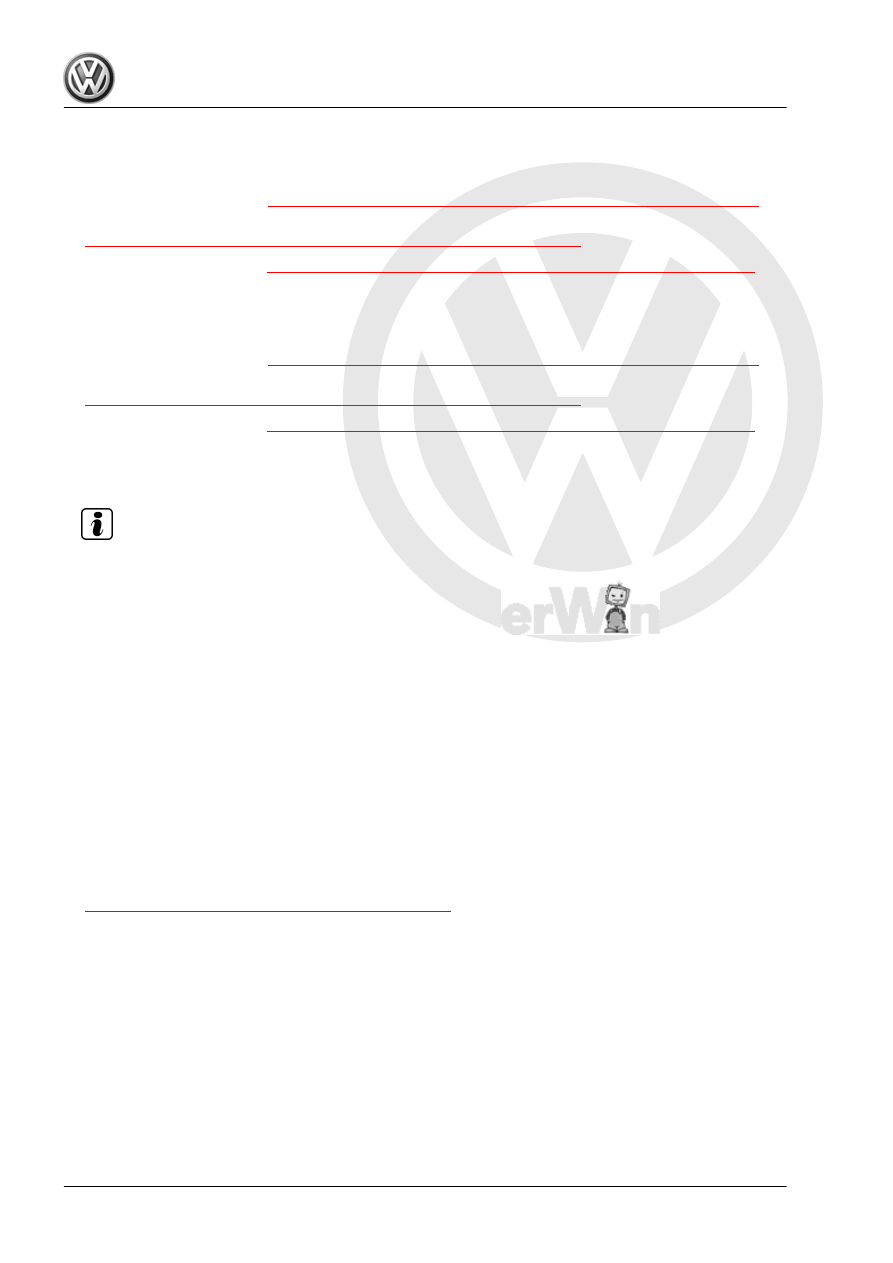Volkswagen Golf / Golf GTI / Golf Variant. Manual - part 550

13 - Dryer Bag
❑ There are different versions. Refer to the Parts Catalog.
❑ Removing and installing:
⇒ “2.6.1 Dryer Bag, Removing and Installing, Denso Condenser”, page 42
♦ Modine condenser. Refer to
⇒ “2.6.2 Dryer Bag, Removing and Installing, Modine Condenser”, page 44
.
♦ Keihin condenser. Refer to
⇒ “2.6.3 Dryer Bag, Removing and Installing, Keihin Condenser”, page 47
.
14 - Strainer
❑ There are different versions. Refer to the Parts Catalog.
❑ Removal and installation
⇒ “2.6.1 Dryer Bag, Removing and Installing, Denso Condenser”, page 42
♦ Modine condenser. Refer to
⇒ “2.6.2 Dryer Bag, Removing and Installing, Modine Condenser”, page 44
.
♦ Keihin condenser. Refer to
⇒ “2.6.3 Dryer Bag, Removing and Installing, Keihin Condenser”, page 47
.
15 - Receiver/Dryer
❑ There are different versions. Refer to the Parts Catalog.
❑ Is integrated on this version of the condenser
Note
Under certain conditions, the receiv‐
er/dryer and the dryer bag does not
need to be replaced each time the
refrigerant circuit is opened. Refer to
⇒ Refrigerant R134a Servicing;
Rep. Gr. 00 ; A/C System, General
Information .
2.3
Refrigerant Circuit Pressure Sensor -
G805- , Removing and Installing
Special tools and workshop equipment required
♦ Torque Wrench 1331 5-50Nm - VAG1331-
♦ Commercially Available 12-edge 1/2" Socket Long, 24 Open‐
ing
Removing
– When working on the refrigerant circuit, note the information.
Refer to